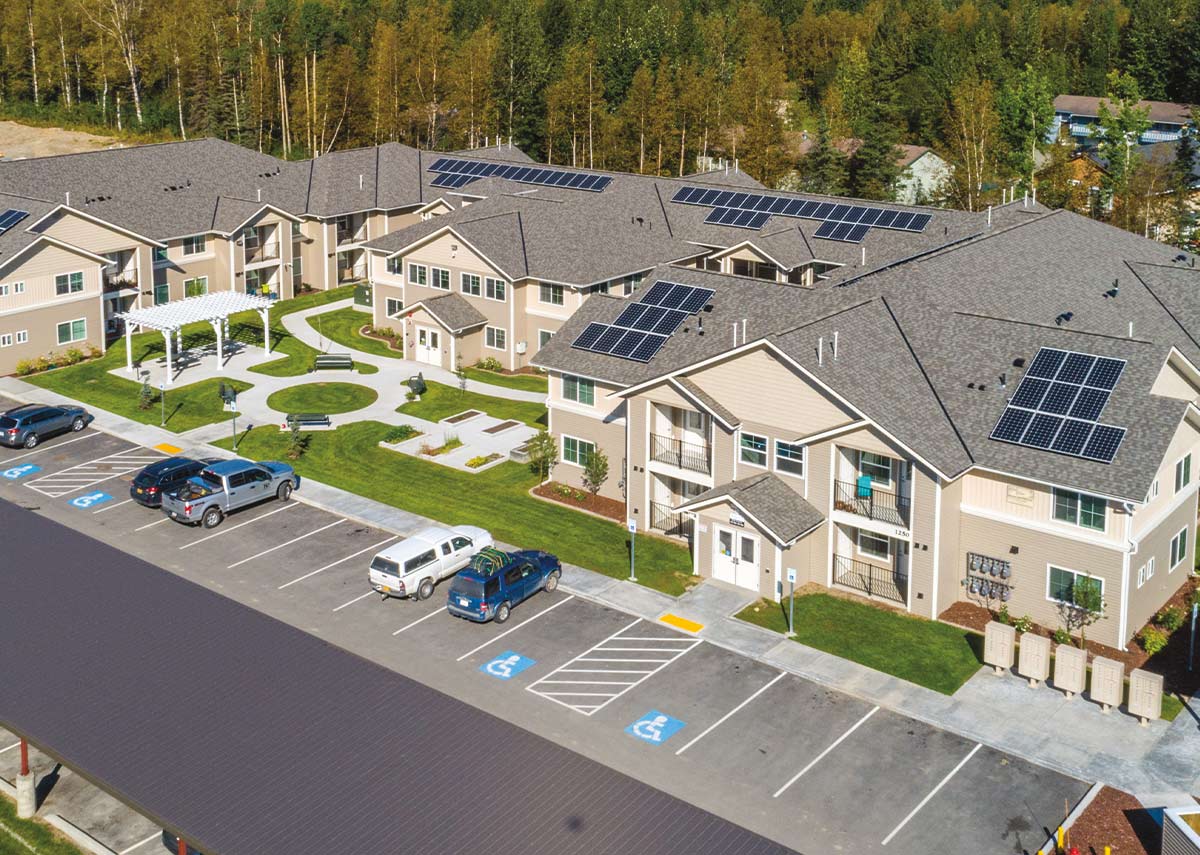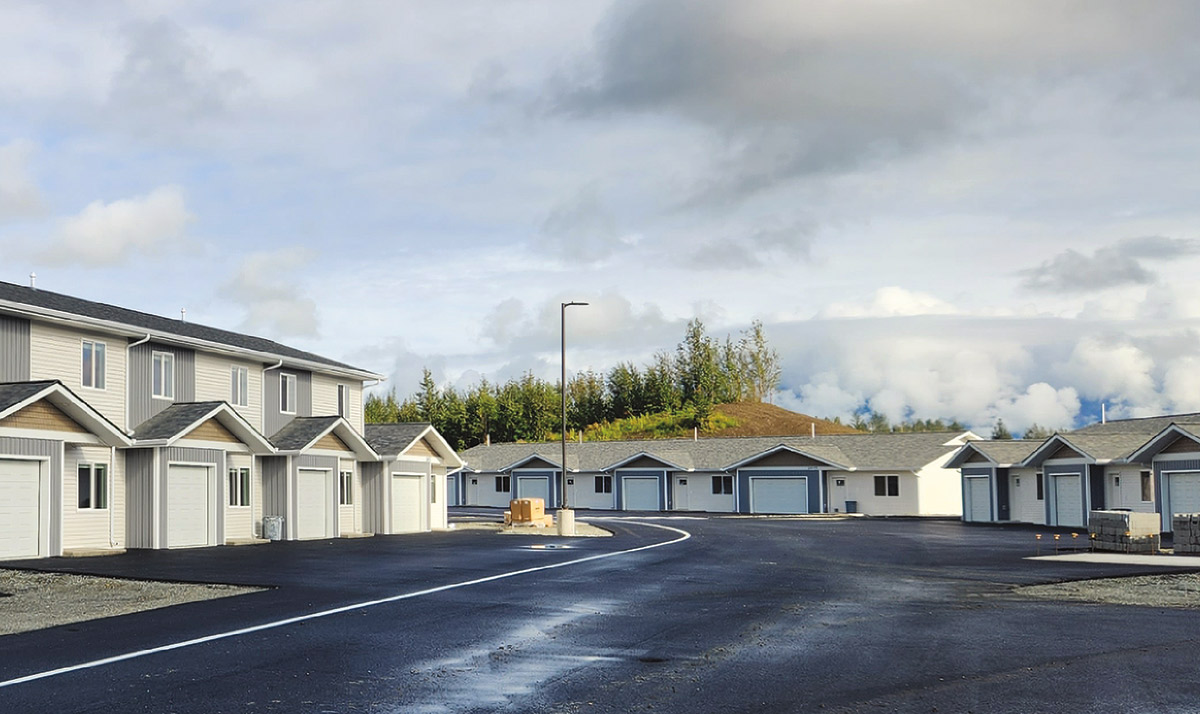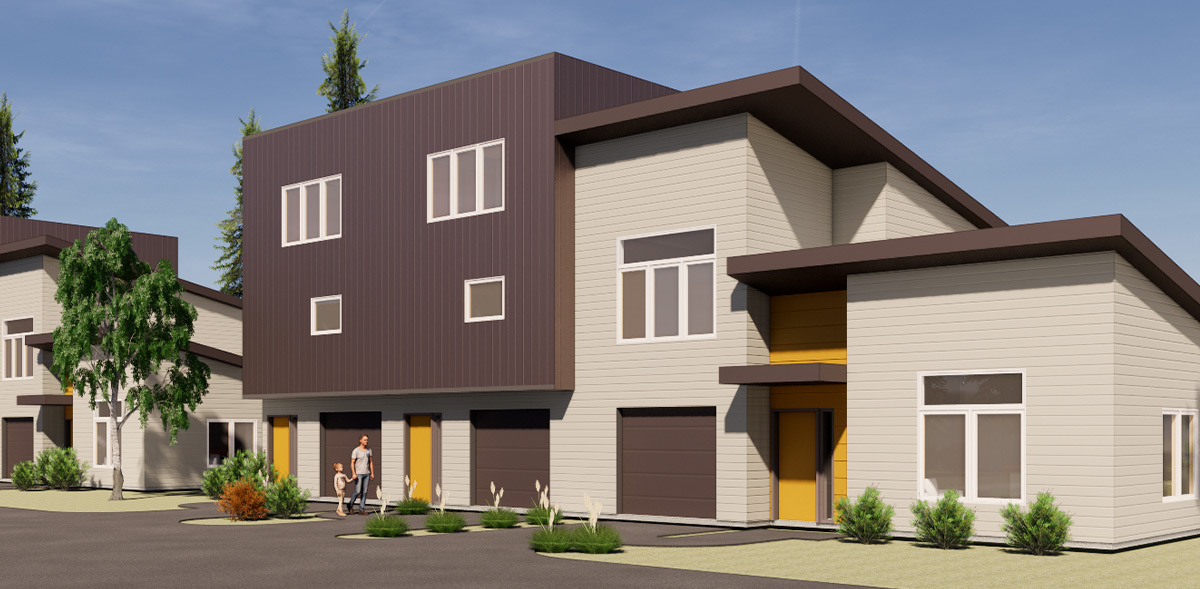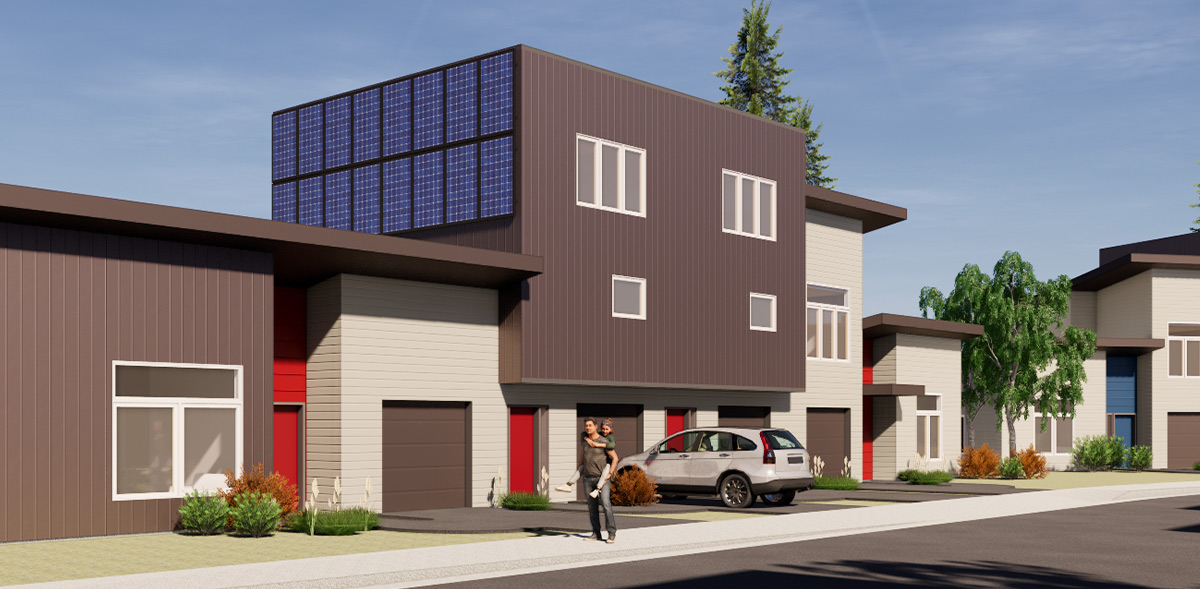he Matanuska-Susitna Borough, long considered Anchorage’s bedroom community, has a housing problem. Its growth is outpacing available housing, particularly affordable rental housing.
It’s outpacing it so quickly that housing and emergency shelter is listed in the 2022 Mat-Su Community Health Needs Assessment Implementation Plan as the top health need to be addressed.
The implementation plan is a direct outgrowth of the triennial Mat-Su Community Health Needs Assessment, a study the Mat-Su Health Foundation (MSHF) must undertake every three years due to its affiliation with Mat-Su Regional Medical Center, says MSHF public affairs director Robin Minard.
MSHF operates Mat-Su Regional Medical Center jointly with Franklin, Tennessee-based Community Health Systems through a 65/35 partnership. The foundation’s primary role is to work in the community to improve the health and wellness of Mat-Su residents, using some of the proceeds earned through the hospital partnership. To that end, in its 2022 annual report (the most recent one posted), MSHF listed more than $15 million in grants distributed that year, along with $5 million in program and capacity building. It ended the year with nearly $332 million in net assets.
Each Community Health Needs Assessment identifies goals and charts accomplishments in the three-year span since the previous assessment. It’s worth noting that housing and emergency shelter wasn’t even listed as a priority in the 2019 Community Health Needs Assessment. However, in the most recent assessment, almost half the 1,000 Connect Mat-Su survey respondents reported they had unmet needs related to housing.
Those needs varied largely due to location. The survey showed that one in five Mat-Su residents experiences housing problems considered severe: overcrowding, high costs, or a lack of kitchen or plumbing facilities. The more rural reaches of the Mat-Su—the Glenn Highway or Upper Susitna areas—were more likely to have structures without complete plumbing, the survey notes.
“Recent trends in landlords transitioning year-round units to short-term rentals have exacerbated the problem. Temporary shelter is the number-one system gap identified by Connect Mat-Su in 2021 and 2022,” the survey reports.

Valley Residential Services
VRS currently has fifty-two housing units of workforce housing (partially subsidized housing) under construction, having added eighty-six units in 2023.
“My goal is to provide roots for families to have safe, affordable housing,” VRS President and CEO John Weaver says.
Weaver has been at the helm of VRS since 2006. Since then, the organization’s number of employees has surged, from four to more than twenty-five, and the number of housing units it manages has increased as well, from 113 to 473.
“John will say that the success that VRS has is actually a team effort—and he is right, it does take a team—but a team needs a leader to give it direction, to nurture it, and to guide it along a path to success, and John is that leader,” says Mat-Su Health Foundation President and CEO Elizabeth Ripley. “In addition to his paid position at VRS, John is a tireless volunteer. He has served as president of the Wasilla Area Seniors and Family Promise boards of directors for more than ten years and been active with the Mat-Su Coalition on Housing and Homelessness and State of Alaska homeless coalition. John also serves as an elder and trustee for First Presbyterian Church in Anchorage, which is providing supportive housing there as well. He makes a mark on housing systems wherever he goes.”
The two-phase project will have a total of seventy-six rental units, set up as two- and three-bedroom townhomes with four units in each building. The first forty-unit phase of the project opened to renters in September and was fully occupied by the end of 2023. The second phase of the development, with thirty-six units, will be finished by the summer.
One nice feature of the development, Weaver says, is that every unit includes a garage. Units also have in-floor heating and full-sized washers and dryers. A community center with a site manager’s office, workout area, computer area, TV area, and a reading area will be part of the second phase of construction, Weaver says—that’s something VRS strives to provide for every development it does.
“The big selling point on that project is the proximity; there’s an elementary school on Stringfield Road, a high school and middle school within a mile, it’s close to shopping and medical, and for commuters, it’s an easier end of the Valley to head into Anchorage,” he says.
Valley Residential Services

Another project in progress is named for its location, Old Matanuska Road, near Walmart and The Valley Cinema. That project, with one- and two-bedroom units, has twenty-four units currently occupied and another twenty-two being built, Weaver says. Those units also feature a garage and are within walking distance to several jobs.
Over this year, VRS’s 473 managed housing units will grow to 653, though not all of that is workforce housing—the nonprofit also manages or partners in the management of senior housing and projects for people with developmental or behavioral disabilities. Recently, VRS partnered with California-based housing developer The Pacific Companies to build housing focused on helping people fresh out of a treatment facility or out of homelessness.
The Bridgeway development north of Wasilla has twenty-two units of efficiency and one-bedroom apartments, fully furnished, with a case manager on site. A second phase of that development, with eighteen additional units, was completed in September. Last year was a busy year for Weaver and his team of twenty-four employees, and he doesn’t see it slowing down soon. Even when the planned units are complete, Weaver says the waitlist for available housing will still be more than 100 names long.
According to the market feasibility study conducted for the project (a requirement for AHFC financing), renters who fall under the 30 to 60 percent of area median income level will pay between $640 and $1,281 for a two-bedroom, one-bath, 861-square-foot unit or between $739 and $1,479 for a three-bedroom, two-bath, 1,168-square-foot unit, utilities included. According to the study, market-rate rents (before utilities) for those units would be $1,300 and $1,500, respectively, though income and rent limits are recalculated each year.
How can Valley Residential Services and The Pacific Companies afford to build and rent the units at a subsidized rate? They don’t. Housing grants and tax credits help finance low-income housing. The Mat-Su Health Foundation, the Rasmuson Foundation, and Weidner Apartment Homes have been instrumental in assisting with gap funding over the years to make these projects a reality, Weaver says.
There are a few different financing options, but low-income tax credits are probably the most popular, AHFC Manager of Housing Development Andy Petroni says. AHFC can issue tax credits that can be sold to finance a low-income housing project.
“The amount a project can receive is based on the amount of depreciable basis—the costs they can depreciate on their taxes,” Petroni explains. “It’s a gap-funding program, so you take the amount of debt the project can support plus any other sources of funding coming in, the gap between that amount and the total construction cost is the gap AHFC funding fills.”
AHFC issues the tax credits, which are sold on the equity market, and the project is financed, with tax credits claimed over time. Once the investment partner goes through the agreed-on compliance period, often fifteen years, they have claimed all the benefit they can from the project and they step away from it, at which point it reverts to VRS and its project partner. The tenant rights and low-income restrictions stay with the land, Petroni says. AHFC is generally required to examine tenant files yearly and complete on-site compliance inspections every three years. About 6,100 units, or 210 properties, are on AHFC’s compliance list.



Valley Residential Services
A 3.6 vacancy rate speaks of a tight rental market, meaning it’s not easy for individuals and families to find rental housing at the estimated $1,297-per-month rental rate. Anchorage’s comparative vacancy rate is just above 4 percent, with 333 vacant units out of 8,159 surveyed and an average adjusted monthly rental rate of $1,404.
Even Juneau, where the rental housing market is notoriously tight, had a vacancy rate of 4.1 percent in 2023, with 46 units vacant of 1,121 surveyed, though its average adjusted monthly rent was higher than Anchorage, at $1,420.
“Below 5 percent is considered a pretty tight housing market,” Petroni says.
The goal of subsidized housing such as what VRS offers—and what AHFC helps to build around the state—is not to infringe on the private rental housing market, however. The aim is to help individuals and families who can’t afford market-rate housing, whose income makes it impossible to afford the nearly $1,300-per-month market rate.
As Petroni says, “These projects help to add units. We hope to not compete with the market-rate units; it will help take the pressure off the lowest-income folks who just can’t find anything they can afford out there.”